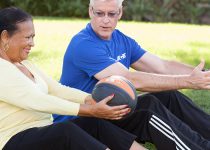A Foam Roller…Workout?

Foam rollers are everywhere, so why not use them for everything? While they are typically considered a warm-up and/or recovery tool, you might be surprised to learn that they can be used to create a challenging workout as well.
What’s That For?
Part of the fun of fitness is discovering new ways to challenge your body. It’s even better when you can use something you already have access to in a completely fresh way. Whenever I encounter any piece of fitness equipment, I immediately begin brainstorming ways to use it that are outside of what you are “supposed to” use it for.
Perhaps you’re under a time crunch, in a gym where you’re having a hard time getting access to machines or other equipment, or you just need a simple, one-piece-of-equipment workout you can do at home. Grab your foam roller and let’s get a workout!
The Workout
This workout consists of one warm-up movement followed by a circuit of seven exercises. The workout uses timed sets of 25 seconds of work and 12 seconds of transition to the other side or next exercise. Perform the circuit two to three times and experiment with different work-to-rest ratios to vary the challenge if you use this workout often.
The Exercises
Supine Opposite Arm and Leg Extension (Warm-up) – 8 reps each arm and leg combination
The purpose of this movement is to prepare you for the workout by promoting mobility in your shoulders and hips, and getting your body ready to maintain a stable low back by warming up your core.
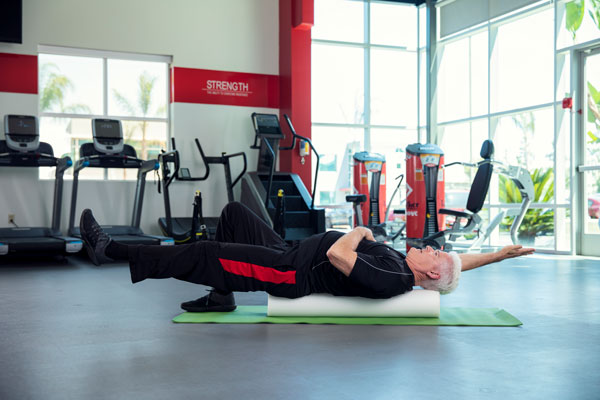
The purpose of this movement is to prepare you for the workout by promoting mobility in your shoulders and hips, and getting your body ready to maintain a stable low back by warming up your core.
This exercise is much more challenging than a regular push-up due to the asymmetry in the hand positions and the instability of putting your hands on top of a roller. At first, try the push-up with the foot on the same side as your “high side” arm (the one closer to your head) stepped in toward the roller. The shift of some of your weight forward will reduce the resistance a little. If you’re doing this exercise in a small space, try crawling backward when you run out of room crawling forward. Just keep in mind that crawling backward is significantly more challenging.

Using the roller as an obstacle for the skater hop creates unique challenges for this common exercise. You’ll need more height to clear the roller, while the hand tap provides a consistent range of motion and ensures that the glutes will be more involved in each landing. Because the roller can move easily, you have to use a soft touch on the hand taps, which will bring a greater focus on the quality of your landing.
Single-leg Stance Quick Roller Flip
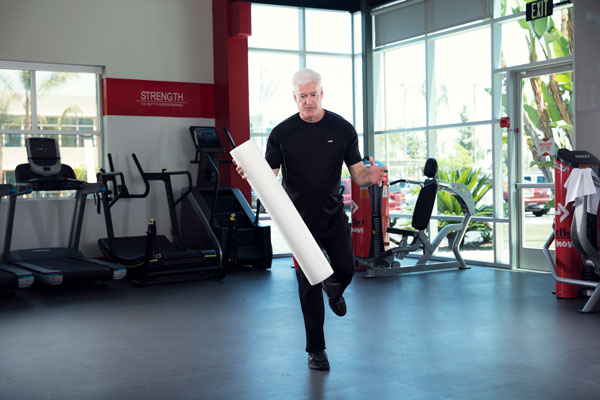
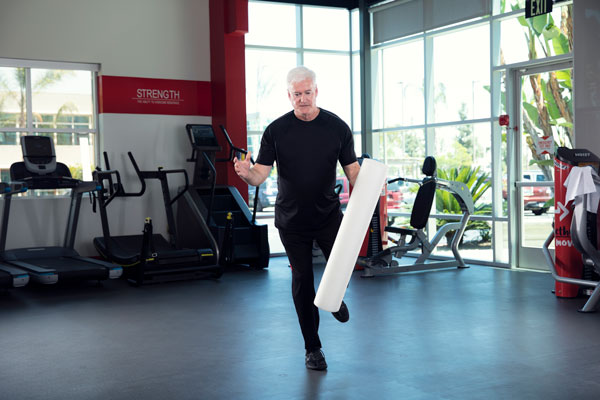
This exercise challenges balance and eye-hand coordination, while giving you an active break from the previously demanding exercises. Keep in mind that the faster you flip the top end of the roller back and forth, the easier it is to keep the roller in the air.
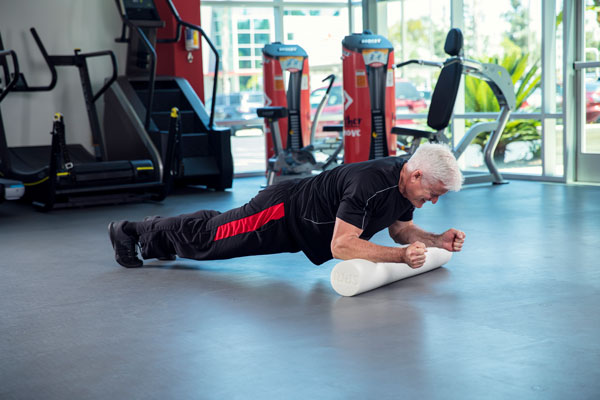
This plank variation brings dynamic stability to a plank, which makes it more beneficial and more interesting than a motionless plank. Option one involves shifting by moving the ankles. Option two is to shift by moving the arms only. With option two, the roller will roll along your forearm as you move your arms forward and backward. The forward position (roller near the elbows) is more challenging for your core, while the backward (roller near your wrists) position is more challenging for your arms.

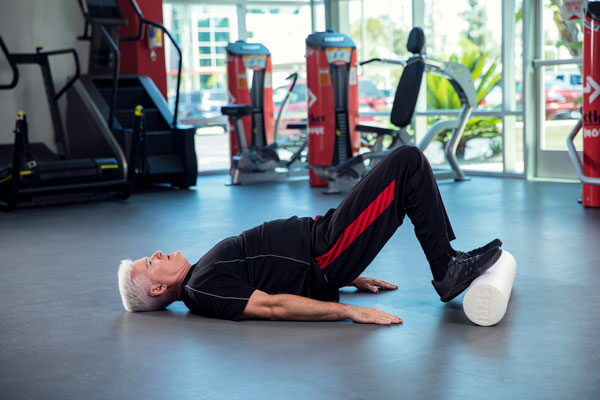
This movement is similar to a stability ball hamstring curl, but you’re a bit more stable because the roller is more stable than a ball. Lift your hips as your feet move in toward your body.
The asymmetry of the hands and the instability of the roller make this a challenging variation on an already challenging exercise. The farther apart your hands are, the harder the exercise will be, so experiment with different spacing that gives you a good challenge, but also a feeling of success with the exercise.
Offset Stance Squat to Single-leg Balance
During this exercise, you might find that your foot on the floor lands in a slightly different spot with each rep. This is normal, natural and part of the benefit of the exercise. In life, your feet are often in asymmetrical and different positions when you squat. Keep moving fairly quickly as the goal is not to try and stand on the roller with a single leg, but to simply use the asymmetry and instability to provide a unique challenge to your leg muscles.
Give this workout a try the next time you want something that works your whole body, is time-efficient and uses a familiar tool in novel ways.

